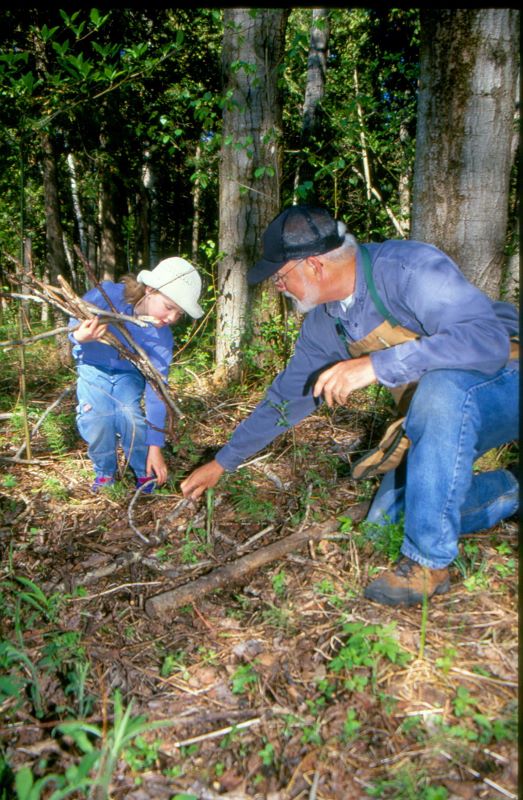submitted by Philip Fry
Fred Schueler has sent me a most interesting email about practical and local nature-based responses to the environmental crisis.
One project Fred mentioned was about a project to create “instant old growth” in a vacant lot. He envisioned the process as: “hand digging pits and mounds, dragging in coarse woody debris, covering the site with a layer of manure, and planting early-and late- successional trees in a matrix of deep-tubered Jerusalem artichokes, to provide instant shade and loosen up the soil, and then introducing other forest floral and fauna as the artichokes were shaded out by the trees.” Although Fred’s project aimed at local reforestation, many of the steps he mentions can be applied to the transformation of smaller areas into wildflower meadows or woodland clearings.
Fred also called my attention to the pit and mound work done by Naomi Langlois-Anderson in the Larose Forest. She explained to me that the project was located in a half-hectare spot, “where a Red Pine plantation had failed due to beaver flooding. It had been salvage-cut, so I decided to use the stumps as part of creating mounds. Both the pits and mounds were dug using a small high-hoe. After construction, I planted native plants, shrubs, and trees. Some are Carolinian species [from the southernmost part of Ontario] that are being watched to see if “species migration” might work and which species do best.” Naomi’s project highlights the adaptability of the pit and mound structure to a given site. If we think of the structure, not as something to be copied in detail, but rather as an example of regenerative principles, it is possible to imagine it as a source of ideas for the transformation of our front and back yards into positive moderators of the CO2 cycle and enhancers of biodiversity.
With regard to flatness, Fred wrote about the surprising, and somewhat intriguing, outcome of the CAF bombing exercises during WWII in Mer Blue, just east of Ottawa. The explosions created ponds in which Spotted turtles now live, and evergreen trees grow in the ridges of earth thrown up around the points of impact. I don’t expect that anyone would adopt such measures to rework the surface of their lawns, but let’s push the example further. Flattening is about the reduction of small topographical features on a site; levelling is about the retention of a single elevation. If we observe local cultivated fields, despite the flattening, we can often see rises and dips that betray the presence of underlying geological forms and, often, a general over-all slope of the land. These features, along with the composition of the soil, influence drainage and the availability of nutrients. What is missing to keep the soil healthy in these fields are the important small features that enhance nutrient recycling. On a small site, a bit of planning and a good shovel can replace the RCAF’s bombs.
Inspiration for carbon sequestering and soil amendment is also found in the function of standing dead trees (a.k.a. “snags”) in woodlots and hedgerows. This year, there are many more than usual in our municipality, because of the invasive Emerald Ash borer. Though sometimes the dead ash are dangerous and need to be removed, we should likely leave many standing because, like other snags, they sequester carbon and, over time, will become vertical supermarkets, high-rise residences, and lookouts for insects and birds. Also, wood chips tossed aside by woodpeckers accumulate around the snags’ trunks, and falling branches litter the surrounding area; as they decompose, they contribute to the nutrient cycle of the site.
Snags suggest “stick planting” as a gardening technique. Small branches, some partially weathered and already decomposing, others relatively fresh, are collected. Near a depression dug in the ground, the branches are criss-crossed, starting with the most decomposed, over previously planted perennials, building a slightly raised, open network. As the lowest branches decompose further, they fertilize the soil, enhance its tilth, and conserve moisture; the whole network disappears as the perennials grow. Having become a garden feature, the network functions like a mound in a woodlot.
Please Email me at wildflowerguy@gmail.com with your comments and suggestions for “CO2 Down to Earth.”








